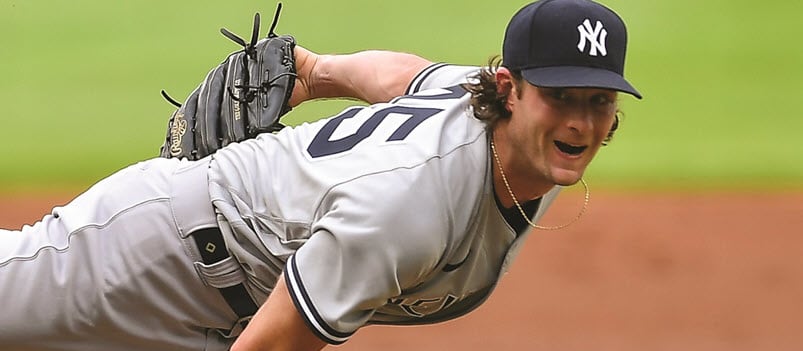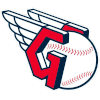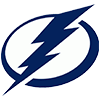The 2023 MLB season is right around the corner, and the dream for any DFS player is to take down a large GPP contest and the big payday that goes along with it. While MLB DFS doesn't feature million-dollar top payouts like the NFL, that doesn't mean the prize pools aren't large — and we also don't have to wait a week in between main slates. Typically, the daily featured contest on DraftKings is a $15 tournament with a top prize of either $50k or $100k, with total entries ranging between 20,000-25,000 lineups. In this article, I'll take a deep dive into the analytics behind the 62 DFS contests from the 2022 MLB season in which the DraftKings main slate had at least 10 games.
Stacking
While there is no one size fits all to building your DFS lineup, building your team around stacking five hitters from the same team is the most successful route. Nearly two-thirds of winning lineups (64.5 percent) stacked five hitters, while 52-of-62 lineups (83.8 percent) stacked at least four hitters from the same team. Team stacking is critical for DFS baseball due to correlation. When a team is lighting up the scoreboard, multiple players from the lineup are going to be picking up fantasy points for hits, runs, RBIs, etc. to vault you up the leaderboard. Here is the breakdown of how often each spot in the batting order appeared in the winning lineups that stacked at least four hitters from the same team:
- 1
The 2023 MLB season is right around the corner, and the dream for any DFS player is to take down a large GPP contest and the big payday that goes along with it. While MLB DFS doesn't feature million-dollar top payouts like the NFL, that doesn't mean the prize pools aren't large — and we also don't have to wait a week in between main slates. Typically, the daily featured contest on DraftKings is a $15 tournament with a top prize of either $50k or $100k, with total entries ranging between 20,000-25,000 lineups. In this article, I'll take a deep dive into the analytics behind the 62 DFS contests from the 2022 MLB season in which the DraftKings main slate had at least 10 games.
Stacking
While there is no one size fits all to building your DFS lineup, building your team around stacking five hitters from the same team is the most successful route. Nearly two-thirds of winning lineups (64.5 percent) stacked five hitters, while 52-of-62 lineups (83.8 percent) stacked at least four hitters from the same team. Team stacking is critical for DFS baseball due to correlation. When a team is lighting up the scoreboard, multiple players from the lineup are going to be picking up fantasy points for hits, runs, RBIs, etc. to vault you up the leaderboard. Here is the breakdown of how often each spot in the batting order appeared in the winning lineups that stacked at least four hitters from the same team:
- 1 – 62 percent
- 2 – 75 percent
- 3 – 67 percent
- 4 – 42 percent
- 5 – 62 percent
- 6 – 56 percent
- 7 – 44 percent
- 8 – 38 percent
- 9 – 24 percent
As you can imagine, the farther you go down in the batting order, the less likely hitters are to appear in winning lineups but they certainly can't be ignored. Surprisingly, cleanup hitters were a bit of an underachiever, only outperforming the eight and nine hitters. This is a combination of the fourth hitter typically being more hit-or-miss than the first three hitters while also carrying a high salary. Avoiding the cleanup hitter can also be a way to come up with a contrarian build from other players who use the same team stack, although it does come with some risk.
Another common question: should you include the starting pitcher of your team stack in your lineup? While it can certainly work, it happened in just 19 percent of winning lineup stacks last season. It's not uncommon that if your hitting stack pans out, the starting pitcher may get pulled earlier than usual compared to a close, low-scoring game.
As far as determining which teams are the best to stack on a given slate, looking at the oddsmakers' over/under for each game and implied run total for each team is a great place to start. Over/unders at 7.5 or less are games I rule out, as those are likely to be pitchers' duels and provide a limited ceiling for a team stack. I also like to focus on teams that are favored or a slight underdog (+110 moneyline or better), unless a team that's a larger underdog has an implied run total of at least 4.5. You can also check out our team stacks page on our DFS Optimizer, which will break down the best stacks of the day.
More Numbers
Of the 40 analyzed winning lineups that had a team stack of five hitters, only 20 percent of the time did the lineup include five consecutive hitters. The most common run was 2-6, which occurred four times.
The most common stacks using four hitters in a row were 1-4 and 2-5 (six times each). Four lineups used a 3-6 stack.
The most common stacks using three consecutive hitters were 1-3 (17 times), 2-4 (12 times) and 3-5 (10 times).
Salary Cap
Unlike other sports where it's usually advisable to use all $50k of your salary cap, the same isn't true for MLB. The average total salary of the winning lineups was $49,544. 44 percent of lineups left $200 or less on the table, while 11 percent of lineups had more than $1,000 available to spend.
Pitching and Finding Value
Spending up at pitcher is the preferred way to go. The average top pitcher in winning lineups cost $9,684 and the average second pitcher cost $8,097. That's compared to the average starting pitcher salary of $7,740. That's not to say that there won't be occasions where there's a solid value under $7k on the slate, but in general, going with low-salaried pitchers is a way to be contrarian but comes with plenty of downside potential. Of the pitchers analyzed in winning lineups, only 11 percent cost less than $7,000.
If we're going to use a lot of salary at pitcher, where can we get some salary relief from? Your final outfield spot is a great target, as the average third outfielder salary was only $2,860 — over $700 less than catcher. 22 percent of winning lineups used a minimum-salary outfielder, while first base was the next most common place to use a minimum-salaried player at 10 percent. That makes sense considering the boom-or-bust nature of many first basemen, while many minimum-salary outfielders are players getting a spot start who have had limited opportunities but shown plenty of potential.
Rostership
Being contrarian is something you always have to keep in mind when playing GPPs, as finding under-the-radar players who have a big game is a key factor in winning tournaments. One way to do this is by targeting hitters with reverse batting splits, i.e. a right-handed batter that hits better against righties than against lefties. Often DFS players will rule out a right-handed batter facing a RHP, not realizing that this may be a good matchup for some hitters.
Diving into the numbers, the total lineup rostership of analyzed winning lineups was 115.4 percent — just over 10 percent per player. 81 percent of lineups had at least five hitters that were rostered by less than 10 percent of the field, while 61 percent of lineups had at least six hitters under 10 percent. You can certainly take a few chalky batters, but don't be afraid to get unique.
On the flip side, winning lineups didn't get creative at pitcher. On only two occasions did lineups have both pitchers rostered by less than 10 percent of the field; in 65 percent of lineups, both pitchers had double-digit rostership rates.
Tools
The RotoWire subscription comes with a plethora of stats and information that will help in building your DFS lineup, including:
Our Batter vs. Pitcher page, which breaks down historical hot and cold batter vs. pitcher matchups, as well as hot and cold pitcher matchups against the opposing lineup each day.
Our weather page is worth a look, as you may come across a situation where the wind is blowing in and you want to fade both team's hitters and target one of the pitchers.
Umpire Stats are also a thing! Some umpires have a wide or tight strike zone that can make it a favorable day for the pitchers or batters.
Familiarize yourself with our advanced stats page. While casual baseball fans are well versed in batting average and ERA, looking at metrics such as OPS (on-base plus slugging percentage) and wOBA (weighted on-base average) are better ways at determining a hitter's true value and ceiling potential.
Good luck!






































